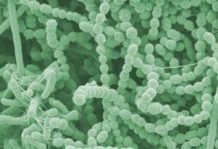Bacteria in the oral cavity are either found in suspension in saliva (planktonic bacteria) or forming a film which binds to the different oral tissues including tooth surfaces and other hard and soft surfaces (tongue and mucosa).
Oral biofilm is continually forming in the oral cavity, it has pathogenic potential and its presence is associated with the development of caries, gingivitis, periodontitis, peri-implant mucositis and peri-implantitis.
In 1683, Leeuwenhoek had already noted that dental plaque consisted of soft deposits formed by microorganisms (animalcules) and food debris. Today, thanks to confocal microscopy, different bacterial communities in the shape of a tower or a mushroom can be observed, as well as microchannels of water connecting different parts of the biofilm.
Anywhere between 15 and 20% of the volume of dental plaque or oral biofilm is made up of bacteria, while the remaining 80 to 85% corresponds to a matrix composed of extracellular polysaccharides, proteins, mineral salts and cell material.
Depending on its location, oral biofilm may be classified as:
- Supragingival: found on tooth surfaces above the gingival margin and primarily made up of gram-positive saccharolytic bacteria.
- Subgingival: resides in the gingival sulcus, where environmental conditions and the different composition of the host defense elements select a different microbiota, largely gram-negative proteolytic bacteria. It is in this area where we most commonly find the bacteria responsible for the most prevalent diseases of the oral cavity (caries, periodontitis and peri-implantitis) and which cause the loss of teeth (Offenbacher, 1996)1 and implants.
- Interproximal: between teeth.
- Offenbacher S. Periodontal diseases: pathogenesis. Ann Periodontol. 1996;1:821-878.
 initiative
initiative 
